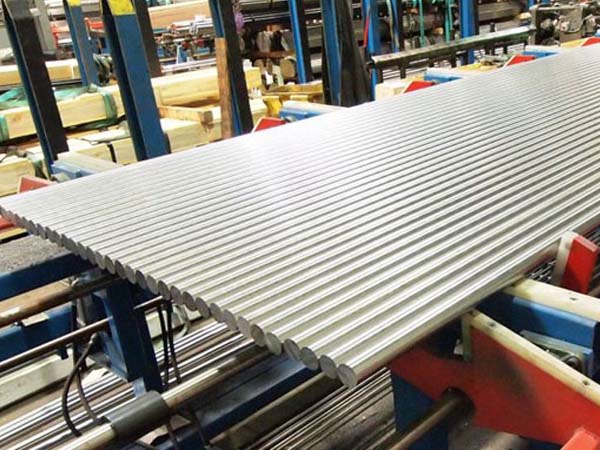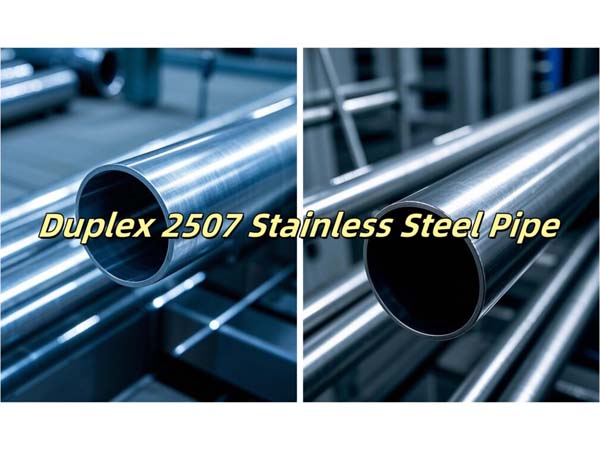





Phone
+86-731-82250427
Address
25th floor, C3 Building, Wanda Plaza, Kaifu District, Changsha, Hunan Province, China.
 Apr 11 2024
Apr 11 2024UNS S32906 (W.Nr. 1.4477, F65) stainless steel is a highly alloyed duplex (austenitic-ferritic) stainless steel that falls under the ASTM A182/A240 standard. It was specifically developed to withstand the corrosive conditions found in the stamicarbon urea process. This material not only exhibits exceptional resistance to intergranular corrosion, pitting, and crevice corrosion but also offers high resistance to stress corrosion cracking (SCC). Moreover, F65 stainless steel possesses good weldability.
Oil and Gas: Offshore platforms, subsea equipment, and oil and gas processing facilities
Chemical Processing: Reactors, heat exchangers, and piping systems that handle corrosive chemicals
Desalination Plants: Heat exchangers, pumps, and other components in desalination plants
Marine Applications: Shipbuilding, offshore structures, and marine equipment
Pulp and Paper Industry: Digesters, bleach plants, and pulp washing systems
Food Processing: Food processing equipment, especially in environments where chloride and acidic substances are present
|
Material |
Cr |
P |
S |
Ni |
Si |
C |
Mn |
Mo |
|
S32906 |
28.0-30.0 |
0.03max |
0.03max |
5.80-7.50 |
0.50max |
0.03max |
0.80-1.50 |
1.50-2.60 |
|
Material |
Tensile strength |
Yield strength 0,2 |
Elongation |
Hardness HB30 |
|
S32906 |
800N/mm² |
650N/mm² |
25% |
310HB |
UNS S32906 duplex stainless steel offers excellent corrosion resistance in various environments, including high resistance to pitting and crevice corrosion, particularly those containing chloride ions. The material also provides good resistance to chloride-induced stress corrosion cracking due to its duplex structure.
UNS S32906 stainless steel can be subjected to heat treatment to optimize its properties. The typical heat treatment process involves solution annealing within a temperature range of approximately 1020-1100°C (1868-2012°F), followed by rapid cooling.
To remove surface scale, oxide layers, and other contaminants from UNS S32906 stainless steel, heating and pickling processes are commonly employed. Initially, the stainless steel is heated within a specific temperature range to eliminate organic materials. Subsequently, it undergoes pickling by immersion in an acid solution, typically a blend of nitric acid and hydrofluoric acid, which dissolves and eliminates scale and oxides. Following pickling, thorough rinsing with water is conducted to eliminate any remaining acid residues. Passivation, which is an optional step, may be performed afterward to enhance the corrosion resistance of the material.
UNS S32906 stainless steel is suitable for both hot and cold forming processes, although certain considerations apply to each method. Hot forming of this material generally takes place above 950°C (1742°F) to ensure that it is in the austenitic phase. Techniques such as hot rolling, hot forging, or hot extrusion can be employed during hot forming. On the other hand, cold forming is carried out at room temperature and involves processes such as bending, drawing, or stamping. It's important to note that cold forming causes the material to work harden, which increases its strength but reduces its ductility.
UNS S32906 stainless steel is a dual-phase material that consists of a combination of austenitic and ferritic microstructures, and this can have an impact on its machinability. In general, UNS S32906 stainless steel has lower cutting speeds compared to austenitic stainless steels. When machining F65, several important factors need to be taken into account, including tooling selection, feed rates, cutting fluids, rigidity and stability of the machining setup, and effective chip control. These considerations are crucial for achieving optimal machining results when working with UNS S32906 stainless steel.
UNS S32906 stainless steel exhibits good weldability, and a suitable method of fusion welding for this material is gas tungsten arc welding (GTAW/TIG) with a shielding gas combination of argon (Ar) and 2% nitrogen (N). It is generally not required to preheat the material before welding, and subsequent heat treatment is typically unnecessary.
Ø Bar & Rod
Ø Plate & Sheet
Ø Coil & Strip
Ø Pipe & Tube
Ø Fitting: Flange, Tee, Elbow, Reducer etc.
Ø Forging: Ring, Shaft, Circle, Block etc.
Ronsco is a supplier with more than 27 years of experience in the special metal field, we always adheres to the business phiosophy of "customer-centered", tries its best to meet the requirements of customers and pursues win-win cooperation with customers. Are you looking for special metal products one-stop supplier! Contact Us Now! Email: marketing@ronsteel.com
